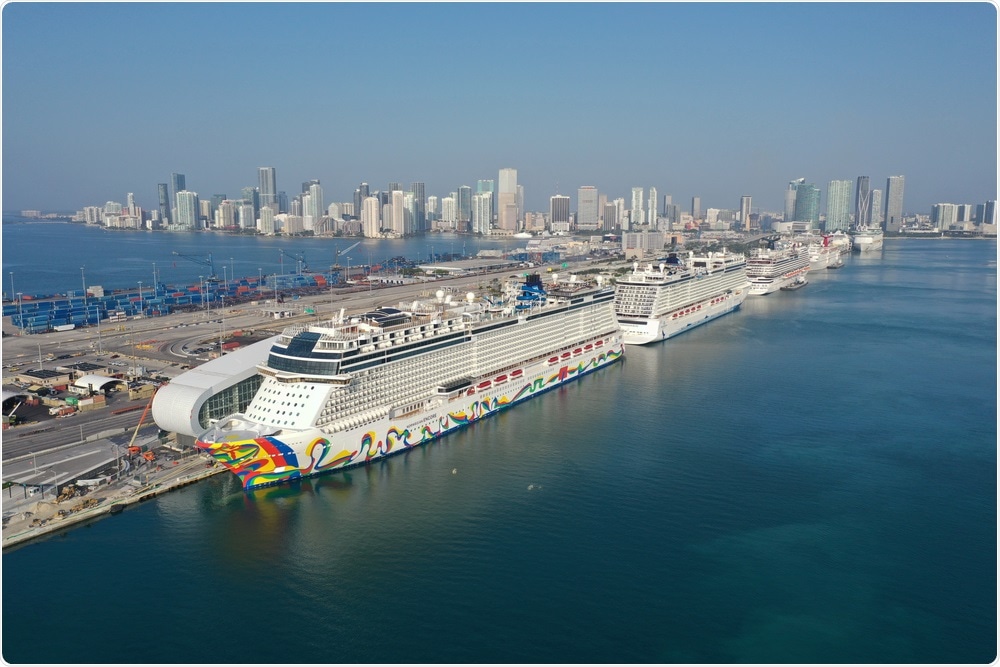Researchers in Texas have developed an air conditioning system that can “catch and kill” severe acute respiratory syndrome coronavirus 2 (SARS-CoV-2) in an effort to help both essential workers and the general public combat coronavirus disease 2019 (COVID-19).
The team made up of scientists from the University of Houston, the University of Texas, and Medistar Corporation say tests showed that almost 100% of aerosolized SARS-CoV-2 was captured and killed with just one passing of air through the novel filter system.
Zhifeng Ren (University of Houston) and colleagues say the system could be used in hospitals, schools, airplanes, airports, office buildings, restaurants, hotels, and cruise ships to help slow the spread of COVID-19.

Image Credit: Avigator Fortuner / Shutterstock

 This news article was a review of a preliminary scientific report that had not undergone peer-review at the time of publication. Since its initial publication, the scientific report has now been peer reviewed and accepted for publication in a Scientific Journal. Links to the preliminary and peer-reviewed reports are available in the Sources section at the bottom of this article. View Sources
This news article was a review of a preliminary scientific report that had not undergone peer-review at the time of publication. Since its initial publication, the scientific report has now been peer reviewed and accepted for publication in a Scientific Journal. Links to the preliminary and peer-reviewed reports are available in the Sources section at the bottom of this article. View Sources
A pre-print version of the paper can be accessed on the server bioRxiv*, while the article undergoes peer review.
Concerns about airborne transmission
Since SARS-CoV-2 first emerged in Wuhan, China, late last year, the virus has infected more than 8.28 million people and caused more than 446,000 deaths.
The rapid spread of the pandemic is related to asymptomatic carriers being highly infectious and the ability of the virus to survive in the air, where it can remain viable for around three hours.
Since having confirmed airborne transmission of SARS-CoV-2, researchers are now wondering whether the virus can be transported long distances by other airborne particles such as dust or water vapor. This raises concerns about the effectiveness of measures taken to reduce transmission, such as social distancing, wearing masks, and washing hands.
One of the earliest studies addressing this possibility analyzed airborne spread in a Wuhan hospital where COVID-19 patients were being kept in isolation. Even with all measures taken to prevent spread via personnel or equipment, SARS-CoV-2 was still identified in parts of the hospital that it could only have reached by moving through air or the ventilation system.
Given the growing number of people who are returning to work as lockdown measures relax, the risk of airborne transmission via ventilation systems is increasing, say Ren and team.
“Thus, determining how to stop the virus from spreading in air-conditioned spaces is extremely urgent.”
SARS-CoV-2 cannot tolerate temperatures above 70 °C
The researchers say that although filtration alone is not enough to prevent spread, most viruses are killed by high temperatures. In the case of SARS-CoV-2, the time required for virus activation is reduced to five minutes once the incubation temperature reaches 70 °C.

Basic properties of commercial Ni foam. (A-C) Photographs under different conditions. Photograph (C) was taken under the glare of a fluorescent lamp. (D, E) Surface SEM images at different magnifications. (F) Cross-section SEM image. (G) XRD pattern. (H) I-V curve of a strip of Ni foam 1.6 mm × 250 mm × 10 mm in size. (I) T-P curve showing the relationship between the Ni foam temperature and the input power.
Therefore, if the temperature of the filter in a ventilation system could be increased to as high as 250 °C, for example, any circulating SARS-CoV-2 would very quickly be killed, explain Ren and the team.
Creating the “ideal filter”
However, traditional fiberglass or aluminum-based filters are difficult to heat, say the researchers, and the meshes are ineffective at catching aerosolized viral particles:
“An ideal filter should be self-heated rather than have an external heat source that would surely cause a substantial rise in air temperature, which requires that the filter itself be electrically conductive.”
One filter that is widely used for energy conversion and storage is nickel (Ni) foam, which is mechanically strong, shows good flexibility, and is self-heated. Since heat is localized to the Ni foam, its transfer to air is limited by the short contact time it has with passing air.
Ren and team say that although this Ni foam may seem suitable for the capture of SARS-CoV-2, it is challenging to design because the foam is not resistant enough to be heated to a sufficiently high temperature.
Reaching the right temperature
Now, Ren and the team have created an Ni foam filter with multiple pieces of folded foam that are electrically connected so that resistance can be increased to achieve a temperature of up to 250 °C.
On testing the device, the team found it caught and killed 99.8% of human-derived aerosolized SARS-CoV-2 with just one passing of air through the Ni foam when it was heated to 200 °C.

Miami, Florida - April 18, 2020 - Aerial view of cruise ships at Port Miami cruise terminal during covid-19 pandemic. Image Credit: Francisco Blanco / Shutterstock
“These outcomes will enable resilience in the battle against COVID-19,” write Ren and colleagues. They say deployment could have a dramatic impact on both essential workers and the public during the pandemic.
“Our study demonstrates the possibility of applying commercial Ni foam as an air conditioner filter for use in airplanes, airports, hospitals, schools, office buildings, restaurants, hotels, cruise ships, etc. for 100% removal of SARS-CoV-2 in cycling air, thus slowing the spread of COVID-19,” they conclude.

 This news article was a review of a preliminary scientific report that had not undergone peer-review at the time of publication. Since its initial publication, the scientific report has now been peer reviewed and accepted for publication in a Scientific Journal. Links to the preliminary and peer-reviewed reports are available in the Sources section at the bottom of this article. View Sources
This news article was a review of a preliminary scientific report that had not undergone peer-review at the time of publication. Since its initial publication, the scientific report has now been peer reviewed and accepted for publication in a Scientific Journal. Links to the preliminary and peer-reviewed reports are available in the Sources section at the bottom of this article. View Sources
Journal references:
- Preliminary scientific report.
Zhifeng Ren Z, et al. Catch and kill airborne SARS-CoV-2 to control spread of COVID-19 by a heated air disinfection system. bioRxiv 2020. doi: https://doi.org/10.1101/2020.06.13.150243
- Peer reviewed and published scientific report.
Yu, L., Peel, G. K., Cheema, F. H., Lawrence, W. S., Bukreyeva, N., Jinks, C. W., Peel, J. E., Peterson, J. W., Paessler, S., Hourani, M., & Ren, Z. (2020). Catching and killing of airborne SARS-CoV-2 to control spread of COVID-19 by a heated air disinfection system. Materials Today Physics, 15, 100249. https://doi.org/10.1016/j.mtphys.2020.100249, https://www.sciencedirect.com/science/article/pii/S2542529320300730